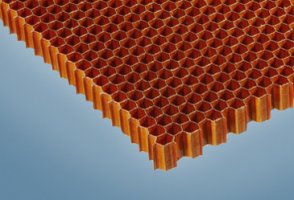Frank Langer
1984 Ericson 30+, Nanaimo, BC
I would appreciate your opinion and advice on repair of one of my teak hatchboards. It is one (the bottom one) of three that fit together one on top of the other to form the companionway entry to our boat. This lower piece consists of a centre piece with two small vertical end pieces which are connected to the centre piece by tongue and groove joints to make a single board--all three of the hatchboards are made like this, likely for decoration purposes. The boards are each 7/8" thick.
I accidently caught my foot on it and one of the end pieces broke off of the centre piece. It broke the tongue part of the tongue and groove joint, so that the connection looks more like a simple butt joint now. It is a clean break, so I epoxied it together again--cleaned both sides of the break, put lots of fast cure mixed epoxy on the one side and applied pressure until the epoxy cured. I didn't apply epoxy to both sides, as I didn't want it to ooze out and cure on the face of the board while I was applying pressure and couldn't clean it up, but I think I applied enough on the one side to fill the joint quite well. After 24 hours of drying/hardening, it looks like a good repair, and after having applied varnish it looks as good as before.
My question now is whether this epoxied joint is likely to hold up to normal wear and tear. I will try very hard not to trip over it again, so that's not the issue. But I'm wondering if the epoxy joint as I've described it above is likely to be quite solid and I can proceed normally, or do I need to treat this section with "kid gloves"? I have considered angling a wood screw from the bottom of the centre piece upwards into the end piece to hold the two together, and similarly from the top downwards, but I don't think it would look good, even with teak bungs. I'm also a bit doubtful whether I can drill this straight enough by hand at an angle and hit the centre of the piece without splitting out either side, so would prefer not to have to attempt this.
Any opinions or advice would be very helpful from those who know the strength of epoxy in this kind of wood joint.
Thanks,
Frank
I accidently caught my foot on it and one of the end pieces broke off of the centre piece. It broke the tongue part of the tongue and groove joint, so that the connection looks more like a simple butt joint now. It is a clean break, so I epoxied it together again--cleaned both sides of the break, put lots of fast cure mixed epoxy on the one side and applied pressure until the epoxy cured. I didn't apply epoxy to both sides, as I didn't want it to ooze out and cure on the face of the board while I was applying pressure and couldn't clean it up, but I think I applied enough on the one side to fill the joint quite well. After 24 hours of drying/hardening, it looks like a good repair, and after having applied varnish it looks as good as before.
My question now is whether this epoxied joint is likely to hold up to normal wear and tear. I will try very hard not to trip over it again, so that's not the issue. But I'm wondering if the epoxy joint as I've described it above is likely to be quite solid and I can proceed normally, or do I need to treat this section with "kid gloves"? I have considered angling a wood screw from the bottom of the centre piece upwards into the end piece to hold the two together, and similarly from the top downwards, but I don't think it would look good, even with teak bungs. I'm also a bit doubtful whether I can drill this straight enough by hand at an angle and hit the centre of the piece without splitting out either side, so would prefer not to have to attempt this.
Any opinions or advice would be very helpful from those who know the strength of epoxy in this kind of wood joint.
Thanks,
Frank
Last edited:


